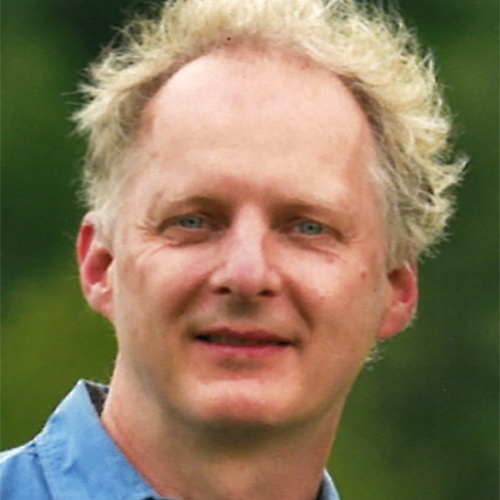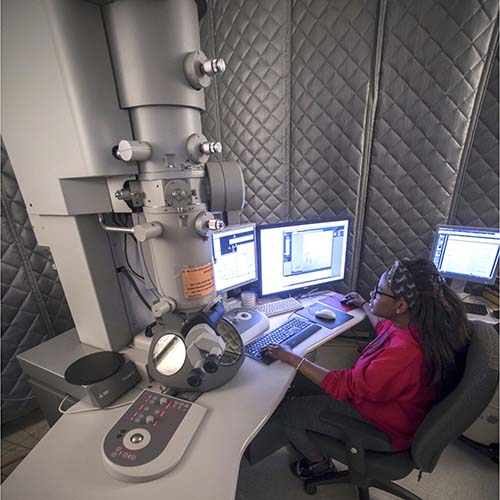![]()
 Terje Dokland, Ph.D. Terje Dokland, Ph.D., professor in the Department of Microbiology, is the latest winner of the Heersink School of Medicine’s Featured Discovery. This initiative celebrates important research from Heersink faculty members.
Terje Dokland, Ph.D. Terje Dokland, Ph.D., professor in the Department of Microbiology, is the latest winner of the Heersink School of Medicine’s Featured Discovery. This initiative celebrates important research from Heersink faculty members.
Dokland’s study, “Shape shifter: redirection of prolate phage capsid assembly by staphylococcal pathogenicity islands” was published in Nature Communications.
Dokland said that Bacteriophages or “phages” are viruses that infect and kill bacteria and are being considered for treatments of a variety of bacterial infections. In this study, they looked at a phage that infects Staphylococcus aureus, a human pathogen associated with multiple diseases.
“Bacteriophage φ12 infects Staphylococcus aureus, an important pathogen involved in many diseases, and is an example of a group of phages that cause the mobilization of genetic elements such as pathogenicity islands,” said Dokland. “φ12 normally forms prolate (elongated) capsids (heads), but when it mobilizes the pathogenicity island SaPIbov5, the head becomes small and round.”
Dokland and his team of graduate students observed the transformation of the virus capsid with high-resolution cryo-electron microscopy by determining structures of the normal elongated φ12 head and the round head formed in the presence of SaPIbov5.
“Our study addresses the fundamental question of how macromolecular complexes are formed and the mechanisms that regulate the assembly process and yields insights into pathogenicity island mobilization and the evolution of virulence in Staphylococcus aureus,” said Dokland.
The Heersink communications staff sat down with Dr. Dokland to gain insights about the research of this study, UAB, and the science community.
 N’Toia Hawkins, graduate student and lead author of the study, using the cryo-electron microscope Q: What compelled you to pursue this research?
N’Toia Hawkins, graduate student and lead author of the study, using the cryo-electron microscope Q: What compelled you to pursue this research?
Dokland: My graduate studies were focused on bacteriophage assembly and was one of the first applications of cryo-electron microscopy and three-dimensional reconstruction of viruses. Ever since then I have been fascinated with molecular machines and how these beautiful and complex structures self-assemble from their protein components. With technical advances in the field of cryo-electron microscopy, it is now possible to determine structures of such complexes at atomic resolution. It’s always exciting to discover something new, such as the mechanism by which the bacteriophage φ12 assembly process is hijacked by the SaPIbov5 pathogenicity island.
Q: What was the most unexpected finding?
Dokland: Although capsid size redirection has been described in other phages, this is the first time a change from an elongated (prolate) to a round (isometric) capsid has been described structurally. The most unexpected result was that the factor that causes the size change was a capsid protein homolog that replaces the phage capsid protein at all the pentameric positions. This is a completely novel mechanism of capsid size regulation.
Q: What is your research’s relevance to human disease?
Dokland: Pathogenicity islands encode virulence factors that affect the bacteria’s pathogenicity and disease progression. Bacteriophages represent the main mechanism by which these islands are disseminated through the bacterial population, and therefore play an important role in bacterial evolution. Furthermore, bacteriophages are being considered for therapeutic purposes (“phage therapy”), for which it will be important to understand the interaction of the phages with their hosts.
Q: How has being at UAB and living in Birmingham affected your research?
Dokland: Birmingham has developed tremendously in the 17 years that I have been at UAB. It is a very livable city with a lot to offer. In recent years, UAB has made considerable investments in infrastructure, enabling the acquisition of the new high-resolution cryo-electron microscope that is currently being installed in our facility. We also have a strong pool of excellent students, such as N’Toia Hawkins and James Kizziah, who are co-authors on this study. Dr. Kizziah, who graduated last year, is now the manager of the UAB cryo-EM facility.
Q: What do you find makes the science community here unique?
Dokland: UAB is a large institution, and you can almost always find somebody with the expertise and knowledge you need for your project. The Microbiology department has great leadership and administration that provides a very supportive environment that makes it easy to focus on your research. The UAB science community is highly collaborative, and people are always willing to help each other.